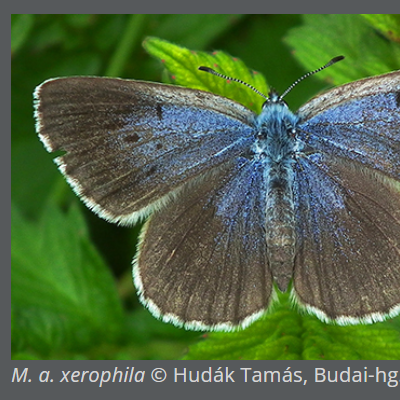A Budai-hegység északi (Szénás-hegycsoport) és déli (Csíki-hegyek) dolomitterületeiről összesen 129 nappalilepkefaj előfordulását jelzem. Ez a teljes hazai nappalilepke fauna (157 faj) 82 százaléka. Ezek közül négy faj csak a Szénás-hegycsoportról (Lycaena virgaureae, Maculinea alcon, Limenitis camilla, Neptis sappho), míg hat faj csak a Csíki-hegyekből (Anthocharis gruneri, Apatura metis, Nymphalis vau-album, Coenonympha oedippus, Lampides boeticus, Polyommatus damon) került elő. Néhány faj bizonyíthatóan nem tenyészett a területen, vagy csak ideiglenesen jelenik meg (Anthocharis gruneri, Apatura metis, Lampides boeticus, Nymphalis vau-album, Polyommatus damon). Nyolc, régebben a területen bizonyosan tenyésző faj jelenlétét nem lehetett kimutatni (Coenonympha oedippus, Colias myrmidone, Jolana iolas, Leptidea major, Nymphalis xanthomelas, Limentis camilla, Polyommatus admetus), öt fajnak pedig az állományai jelentős csökkenést mutatnak (Boloria euphrosyne, Chazara briseis, Colias chrysotheme, Heteropterus morpheus, Maniola lycaon).
Altogether the occurrence of 129 butterfly species has been recorded in the northern (Szénások) and southern (Csíki-hegyek) dolomite region of the Buda Hills (= Budai-hegység). This is the 82% of the butterfly fauna (n = 157) recorded in the territory of present day Hungary. Four species (Lycaena virgaureae, Limenitis camilla, Maculinea alcon and Neptis sappho) have been found
only in Szénások, whilst another six species (Anthocharis gruneri, Apatura metis, Coenonympha oedippus, Lampides beoticus, Nymphalis vau-album, and Polyommatus damon) were recorded in Csíki-hegyek. The records of the following species were based most probably on stray or vagrant specimens: Anthocharis gruneri, Apatura metis, Lampides boeticus, Nymphalis vau-album and
Polyommatus damon. Eight species recorded as breeders in the regions have no modern records, hence it is not possible to confirm their presence (Coenonympha oedippus, Colias myrmidone, Jolana iolas, Leptidea major, Nymphalis xanthomelas, Limenitis camilla and Polyommatus admetus). The populations of five species indicate considerable decline (Boloria euphrosyne, Chazara briseis, Colias chrysotheme, Heteropterus morpheus, Maniola lycaon).
